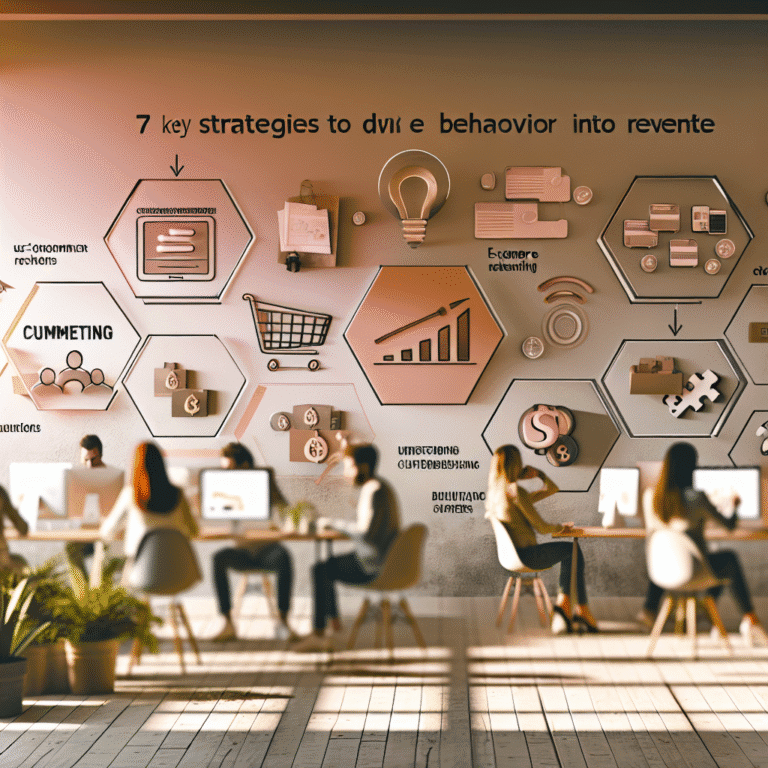Grow Your Online Shop with Data-Driven Strategies
E-commerce growth often feels like pushing uphill, doesn't it? One day, you're debating whether to tweak the ROAS or redesign your omnichannel approach, and the next, staring at numbers stuck like a wonky vinyl record. The real trick, though, isn’t buried in digital artwork or cotton~ candy copy. It lies in the untapped data coursing through your analytics and CRM.
If you're determined to scale up your online store without shelling out a fortune for a fancy agency or overhauling your tech stack, here are seven down-to-earth, data-driven strategies. They're practical, not pie-in-the-sky paperwork.
First up, let's chat about the most overlooked treasure: the picky customers who click away.
Spot the Funnel Leaks Before Wasting More on Ads
Imagine your sales process as a sieve rather than a neat funnel. Many shoppers are keen as mustard up to checkout, yet vanish quicker than a magician’s rabbit. Shockingly, about 70% of shoppers abandon ship before completing transactions. That's not just friction; that's uproar.
Here's a sensible plan to clear the path:
- Use tools like GA4, Mixpanel, or Hotjar to trace the journey from product view, to cart, to checkout, and payment.
- Zero in on where the drop-offs are steepest, especially the "Add to Cart" and "Shipping Info" stages.
- Try A/B testing with small tweaks. Even swapping “Continue” for “Go to Secure Checkout” can yield surprising successes.
Take a leaf from a kitchenware brand’s book: they changed "Standard Post (3–5 days, untracked)" to "Free Secure Tracked Delivery" on their shipping page. Presto! Conversions soared by 14% in a month without spending an extra penny.
Know Your Customers by What They Give, Not Who They Are
Look, lumping customers into broad groups like “Emma, 34, who loves dogs and yoghurts” is about as useful as a chocolate teapot when trying to sell more breadmakers. Instead, focus on their spending habits.
- Get familiar with RFM analysis to spot the loyal big spenders and the occasional opportunists.
- Create micro-segments based on actions — think of what they buy, how often, and where.
- Tailor automated campaigns: roll out the red carpet for VIPs; gentle reminders for those who barely remember you.
As Shopify Plus found, the top 20% of your customers are likely responsible for 60% of your revenue. Keep the lights on by focusing on those who splash the cash.
Tap into Search Behaviour for Better Sales
Folks using your search bar aren’t window shopping; they're fired up to buy. Dress your search engine up in better functionality, and they’ll reward you.
- Track the most common search terms and flag those showing “0 results.”
- Pinpoint the queries that drive the most add-to-cart actions or purchases.
- Mend keyword mismatches, so "puffer coat" also reels in "longline jacket". Be a stickler for UK/US spellings and typo-catchers.
One online apparel shop found customers searching for “longline puffer” without direct results. Updating their tags made conversion rates climb by 9% in a fortnight at no extra cost.
Track Actions That Signal Intent
Plenty of marketing teams lose sleep over bounce rates or page views per session. But it's those little actions, the micro-conversions, that whisper secrets about your shoppers' intentions.
Track these at least as closely:
- Number of product views per session
- Email sign-ups on specific product pages
- Wishlist adds
- Engagement with size charts or shipping info
These aren't just nerdy stats; they’re breadcrumbs leading you to higher sales without raising your voice.
Use Cohort Analysis to Unravel Customer Loyalty
Not all customers are created equal, even if they all clicked "buy" in March. Some sauntered in from Facebook, others read your welcome email, and some just had payday giddiness.
- Cluster users by when or how they came on board.
- See how each bunch behaves over the course of 30, 60, and 90 days.
- Work out which offerings or pages hook them in for repeat spend.
Suppose Cohort A buys regularly whilst Cohort B ghosts you; there's no need to hunt new traffic, just farm more of those Cohort A fellows.
Understand Post-Purchase Patterns to Encourage a Second Sale
Once a purchase is complete, it's tempting to settle back, but the post-buy period can be a goldmine of insights.
- Track how long it takes for customers to make a second order.
- Measure NPS by product type.
- Keep an eye on customer support alerts, especially returns or delivery woes.
Take this note from a skincare brand: by dispatching guides based on a pre-purchase quiz, their reorder rates tripled within 45 days. Personalised care doesn’t cost much but can mean the world in loyalty.
Predict Future Actions with Clever Modelling
Imagine if you could tell what your customers might do next? No crystal ball needed, just a smart use of predictive analytics.
Klaviyo, Lifetimely, or Glew can help you:
- Guess the future CLTV and modify your CAC targets.
- Spot customers who may drift and pull them back in.
- Nail the timing of replenishment emails based on predicted reorder dates.
By anticipating tomorrow from what happened yesterday, you can ensure your shop stays top-of-mind before they forget you exist.
Final Thoughts: Growth Isn’t Gut Instinct
It's not the lack of data tripping most online shops, but drowning in it without a plan. What you need is not more ideas but sharper and cleverer questions backed by data.
To truly grow your online store, follow real user behaviour, not off-the-wall theories from boardroom brainstorming, test small before reshuffling the entire design, and most importantly: start seeing patterns and drawing connections from the numbers.
Shout less, listen more. And remember, in the end, the key to growth is not magic – it's metrics and marvellous insights.





